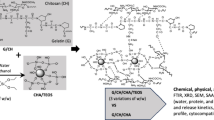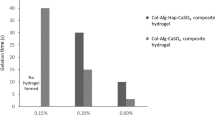Abstract
A novel type of glass-based nanoscale hydorxypatite (HAP) bioactive bone cement (designed as GBNHAPC) was synthesized by adding nanoscale hydroxyapatite (HAP) crystalline (20–40 nm), into the self-setting glass-based bone cement (GBC). The inhibition rate of nanoscale HAP and micron HAP on osteosarcoma U2-OS cells was examined. The effects of nanoscale HAP on the crystal phase, microstructure and compressive strength of GBNHAPC were studied respectively. It was concluded that nanoscale HAP could inhibit the cell proliferation, while micron HAP could not, and that nanoscale HAP could be dispersed in the cement evenly and the morphology did not change significantly after a longer immersion time. XRD and FTIR results show nanoscale HAP did not affect the setting reaction of the cement. Furthermore, GBNHAPC had a higher compressive strength (92 MPa) than GBC. It was believed that GBNHAPC might be a desirable biomaterial that could not only fill bone defects but also inhibit cancer cell growth.
Similar content being viewed by others
Author information
Authors and Affiliations
Corresponding author
Rights and permissions
About this article
Cite this article
Fu, Q., Zhou, N., Huang, W. et al. Preparation and characterization of a novel bioactive bone cement: Glass based nanoscale hydroxyapatite bone cement. J Mater Sci: Mater Med 15, 1333–1338 (2004). https://doi.org/10.1007/s10856-004-5742-4
Issue Date:
DOI: https://doi.org/10.1007/s10856-004-5742-4




